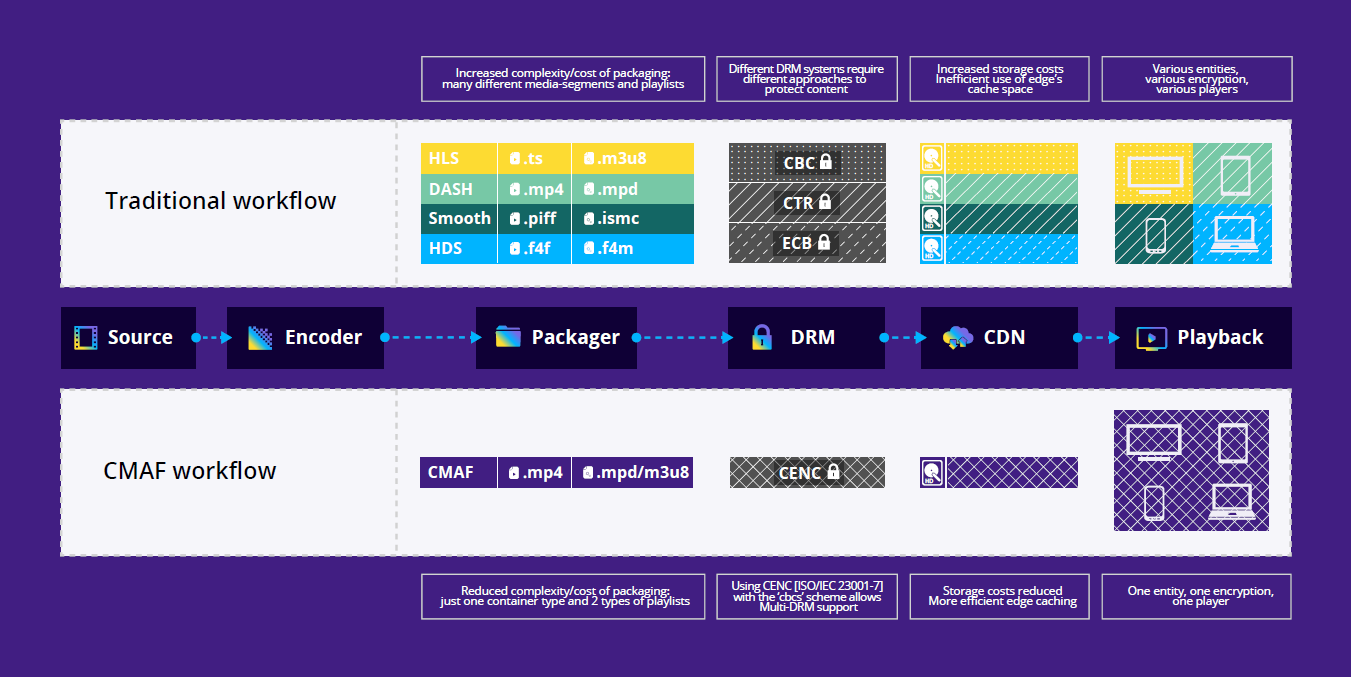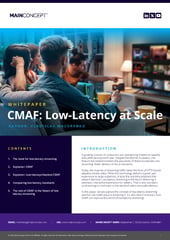
Low-Latency at Scale with CMAF
| Read the white paper to learn more about streaming at scale with low latency. |
| Explore our low latency offerings: | ||||
| SDKs | GStreamer | OTT Content Creation | FFmpeg plugins | Professional Services |
Why is low-latency important?
Watching live sports or any live event is all about the moment, the goal, touchdown, or home run. It is a moment in time when we can, with our fellow supporters, collectively cheer or commiserate a result. As TV becomes more immersive and interactive, that becomes more prevalent. Streaming a live event can have a significant delay, and who wants to be the viewer that receives a goal notification on their phone 30 seconds before it happens on your TV.
However, traditional TV isn’t the answer for many. If your event isn’t being picked up by mainstream TV, then streaming is your only option. Or if you are a follower of a very niche sport or another event, you can only stream. Even if your event is available on traditional television, you may not have a TV to watch it on, as many viewers are using laptops, phones, and tablets to watch content. So low latency streaming without noticeable delay is a hot topic in the world of video and audio delivery.
What are the challenges to low-latency streaming?
One of the main challenges of low-latency streaming is the need to balance the trade-off between quality, delay, and scalability. Implementing low-latency streaming can be complex, and costly, and you may have to sacrifice some video quality. Because it’s all about bit rates, if you want to reduce latency, you must reduce the amount of information that is being transmitted. And compressing the information you do have is complex and doesn’t come as a one size fits all solution.
Today, there are multiple standards for low-latency media delivery, each with its own strengths and weaknesses. Currently, the main standards and protocols for low-latency streaming are WebRTC, SRT (Secure Reliable Transport), RIST (Reliable Internet Stream Transport), LL-HLS and CMAF.
Careful consideration is required to determine the best option for a given scenario. Each of these standards and protocols have their own advantages and disadvantages, and the choice will depend on the specific requirements and use case. Factors such as the type of content, the target audience, scalability, quality of service, and level of control over the delivery infrastructure will impact the choice of a low-latency solution for a particular scenario.
How can CMAF help?
Before we go into the benefits of CMAF, it might help if we first explain what CMAF is. CMAF, or the Common Media Application Format, is a standard that simplifies the process of broadcasting to multiple devices. It’s a streaming services dream, a standard for creating one set of files that reduces not only the complexity but delivery costs too. It provides a single media format for online video delivery.
It’s just as important to understand what CMAF is not. On its own, it won’t reduce latency. Instead, it allows for workflow optimization for VOD assets and for non-low-latency live streams. It also allows for ‘chunking’.

Low-Latency/Chunked CMAF (LL-CMAF) provides a powerful and flexible solution for delivering low-latency video and audio content over the internet. While this approach provides many benefits, it also brings new challenges and complexities, particularly when it comes to implementation and scaling.
There are many technologies that allow you to achieve low latency (even sub-second) when you need to deliver to one endpoint, but when it comes to large scales and audiences, it's not a trivial task to do this while maintaining the video quality. LL-CMAF is the solution that aims to solve such tasks with a realistic latency of two to three seconds.
Delivering low latency is a balancing act between scalability, quality, and latency. The benefits of CMAF go beyond just low latency. It’s an option for OTT providers to ensure their content is delivered efficiently and effectively, providing audiences with the best possible viewing experience.
To find out more about low-latency and CMAF download the whitepaper ‘CMAF: Low-Latency at Scale’.




